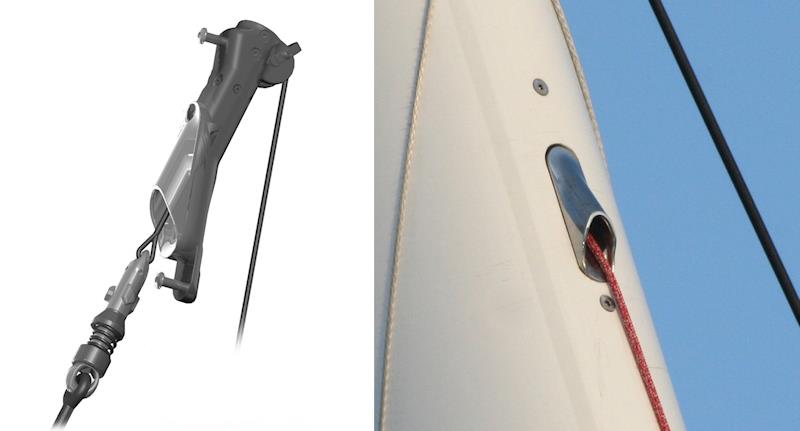
Nick Black looks at Internal versus External Halyard Locks
by Andy Rice, SailJuice 27 Aug 2018 08:00 UTC

Internal trip-less halyard lock © Facnor
Co-owner of independent rigging company, Rigging Projects, Nick Black is one of the most sought-after riggers in the business. One way or another Nick's work has made its way into most of the top tiers of the sport: the America's Cup, Volvo Ocean Race, Vendée Globe, the grand prix circuits like the TP52s, and in the superyacht scene.
In the previous article we talked about the fundamental benefits of having sails secured by a lock system as opposed to the traditional halyard cleated off at deck level.
Once you've decided to install a lock system, the next decision is, are you going for internal or external? Let's look at some of the pros and cons.
Internal
Internal is neater, aerodynamically superior, but can be more complicated and expensive to install. Race-oriented programs will generally go for internal, because any ounce of performance is worth taking. There are two types of internal lock; ones using a separate trip line to release the lock (often referred to as a bullet lock) and those operating on a single hoist-line which both locks and unlocks (a trip-less system!). Internal bullet lock systems can be fiddly and require careful handling to avoid breakage, so are best left to professional crews. However, both Facnor and Karver offer internal, trip-less systems which are suitable for club racers and offshore cruisers.
The 'trip-less' lock
External locks tend to be trip-less, which means there is no secondary 'tripline', only the halyard itself. So, you hoist the headsail on the halyard in the normal way; as the sail nears the top of its hoist, the halyard goes up into the lock and it clicks into the lock. To get if off lock, you have to over-hoist the line by a couple of centimetres and the lock disengages. Karver and Facnor locks are generally trip-less and are the most popular choices for external locks.
Cost vs benefit
Locks positively impact performance at any boat size because they reduce compression in the rig, allow the use of smaller halyards / jammers and minimise wear. However, unless money is no object(!), we see the general cut-off at around 50ft. Locks really become financially viable when you can significantly reduce long, large diameter halyards and expensive jammers. Above 50ft installing a lock will normally be approx 35% more expensive than a traditional 2:1 halyard system but on first replacement of the halyard you will see a cost saving.
Affordable retrofitting
Assuming there's already a pad eye on the front of your mast, you only need to add a strop to fit an external lock. If there isn't the extra patching already, then it's a relatively cheap exercise - probably about 1200 to 1500 Euros for the workmanship on a carbon rig. The external locks themselves are about 30 percent less than an internal bullet lock mechanism. So external locks offer a very affordable way of retrofitting your rig.
What's the learning curve like?
Operating these locking systems is quite simple but there is a knack to it. So, we like to do a short instructional course with our clients to educate them on the new system and make sure they're comfortable using it. We also like to write a short document, an instruction manual, for them to follow.
If you have any questions about lock systems , then please feel free to contact us at
About the author
Andy Rice is a UK-Based European and National Title holder for various types of Racing boats. He started his career in yachting journalism in 1992, writing for Seahorse Magazine. Rice now works as a journalist and copywriter for many different clients and magazines. In between his Sailing Intelligence commitments, he still manages to write regular columns for Seahorse, ShowBoats International, Yachts & Yachting and Boat International. Andy also runs a site for keen sailors, www.SailJuice.com